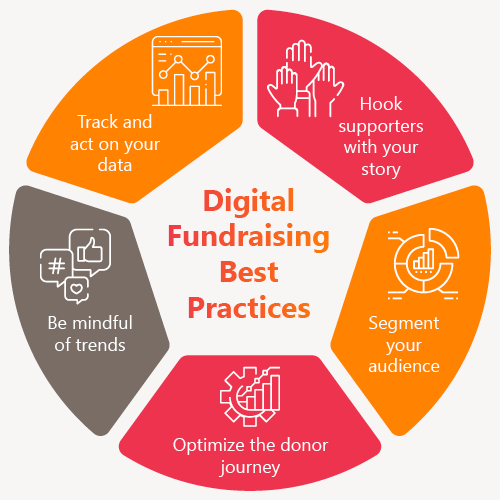Nonprofit Marketing: Methods to Enhance Awareness and Drive Contributions
Nonprofit Marketing: Methods to Enhance Awareness and Drive Contributions
Blog Article
The Role of Area Interaction in Nonprofit Fundraising: Building Lasting Relationships for Sustainable Support
Community interaction is progressively acknowledged as an important part of effective not-for-profit fundraising. The techniques and techniques utilized to engage neighborhoods vary widely, elevating essential questions regarding efficiency and influence.
Comprehending Area Interaction
Area interaction is an important part of effective not-for-profit fundraising efforts. Nonprofits must determine vital stakeholders-- such as community members, regional organizations, and various other companies-- to create efficient involvement methods.
Efficient neighborhood interaction is asserted on energetic listening and responsiveness to the needs and interests of the area. This process involves getting feedback, understanding area dynamics, and ensuring that the organization's goal lines up with local priorities. Engaging the area can take various kinds, consisting of public conferences, volunteer opportunities, and partnership efforts, each created to motivate involvement and financial investment in the organization's objectives.
Additionally, area engagement ought to be come close to as an ongoing dialogue as opposed to an one-time effort. By cultivating a comprehensive setting where community voices are listened to and valued, nonprofits can develop a solid foundation for future fundraising undertakings. Ultimately, a deep understanding of neighborhood involvement encourages organizations to develop authentic links that improve their total performance and sustainability.
Advantages of Strong Relationships
Strong partnerships developed through neighborhood interaction yield countless advantages for nonprofit fundraising efforts. Primarily, these relationships foster trust fund and reputation, important parts in motivating benefactors to contribute. When prospective supporters see a nonprofit actively involved in their area, they are extra most likely to think in its goal and effect.

Additionally, these relationships assist in effective communication. Nonprofits can leverage their links to share tales of effect, updates, and needs, ensuring that advocates stay informed and engaged. This open line of interaction not only strengthens bonds yet also urges word-of-mouth promo, broadening the nonprofit's reach.
Last but not least, solid community ties can draw in new companions and sponsors. Individuals and services are much more likely to line up with organizations that demonstrate significant neighborhood participation, providing added resources and support that can dramatically boost fundraising abilities. Hence, growing robust connections with neighborhood involvement is integral to a not-for-profit's long-lasting fundraising success.
Strategies for Reliable Involvement
Just how can nonprofits properly involve their neighborhoods to improve fundraising initiatives? Regular updates, involving content, and calls-to-action can galvanize community interest and participation.
Second, organizing community occasions, such as workshops, volunteer chances, or fundraising drives, promotes face-to-face communication, enabling nonprofits to display their effect and efforts. These events not just raise funds but also cultivate partnerships and enable area members to involve straight with the reason.
Third, carrying out individualized communication techniques can enhance engagement. Customizing messages to particular benefactor segments based on rate of interests and past payments promotes a sense of belonging and investment in the company's mission.
Finally, developing partnerships with neighborhood businesses and neighborhood leaders can intensify outreach initiatives. Joint efforts can boost exposure and trustworthiness, showing a cumulative commitment to the neighborhood's wellness. By incorporating these techniques, nonprofits can develop lasting partnerships that boost fundraising efforts and drive sustainable support.
Measuring Engagement Success
While involving the area is critical for effective nonprofit fundraising, gauging the efficiency of these involvement efforts is similarly important. Establishing clear metrics permits organizations to examine how well they are connecting with their target market and accomplishing their fundraising objectives. Key efficiency indicators (KPIs) such as contributor retention prices, volunteer involvement degrees, and engagement on social networks systems supply substantial data for evaluation.

Frequently evaluating these metrics enables companies to pivot their methods when essential, making certain that neighborhood engagement stays aligned with their total objective. Moreover, sharing these outcomes with stakeholders fosters openness and constructs depend on, encouraging further area involvement. Eventually, a durable measurement framework not only notifies future fundraising efforts but additionally enhances the relationship in between the nonprofit and its fans, laying More Info the groundwork for lasting success.
Instance Research Studies in Community Impact
Various study illustrate the profound impact that neighborhood interaction can have on not-for-profit fundraising success. One significant example is the "Food for Idea" initiative, where a neighborhood food financial institution partnered with institutions and services to host area dinners. These occasions not just increased funds however additionally fostered a feeling of belonging amongst participants, dramatically enhancing contributor retention prices.
One more compelling case is the "Green Spaces Task," which included regional homeowners in the revitalization of urban parks. This effort not only garnered financial backing from neighborhood organizations but likewise grew a volunteer base that contributed to continuous upkeep and programming. The sense of ownership and pride amongst community members translated right into sustained payments.
In the world of arts, the "Art for All" project successfully engaged neighborhood musicians and patrons to develop collective art installations, leading to enhanced visibility and contributions for a local arts not-for-profit.
These instances highlight see that when nonprofits prioritize community involvement, they can produce enduring relationships that enhance fundraising efforts, guaranteeing sustainable assistance and promoting a vibrant neighborhood society. Such cases show that community engagement is not merely a strategy however a necessary column of nonprofit success.
Conclusion
Finally, neighborhood interaction is essential to the success of nonprofit fundraising initiatives. By promoting strong connections with regional stakeholders, companies enhance trust and trustworthiness, causing enhanced benefactor retention and loyalty. Executing effective involvement techniques and determining their impact makes certain that nonprofits can grow and adapt. Inevitably, a durable foundation of community support not only amplifies fundraising prospective but also grows a society of partnership, important for attaining lasting business goals and sustaining meaningful effect.
Nonprofits should determine essential stakeholders-- such as area participants, neighborhood services, and other companies-- to produce efficient engagement methods.

In conclusion, community involvement is indispensable to the success of not-for-profit fundraising initiatives.
Report this page